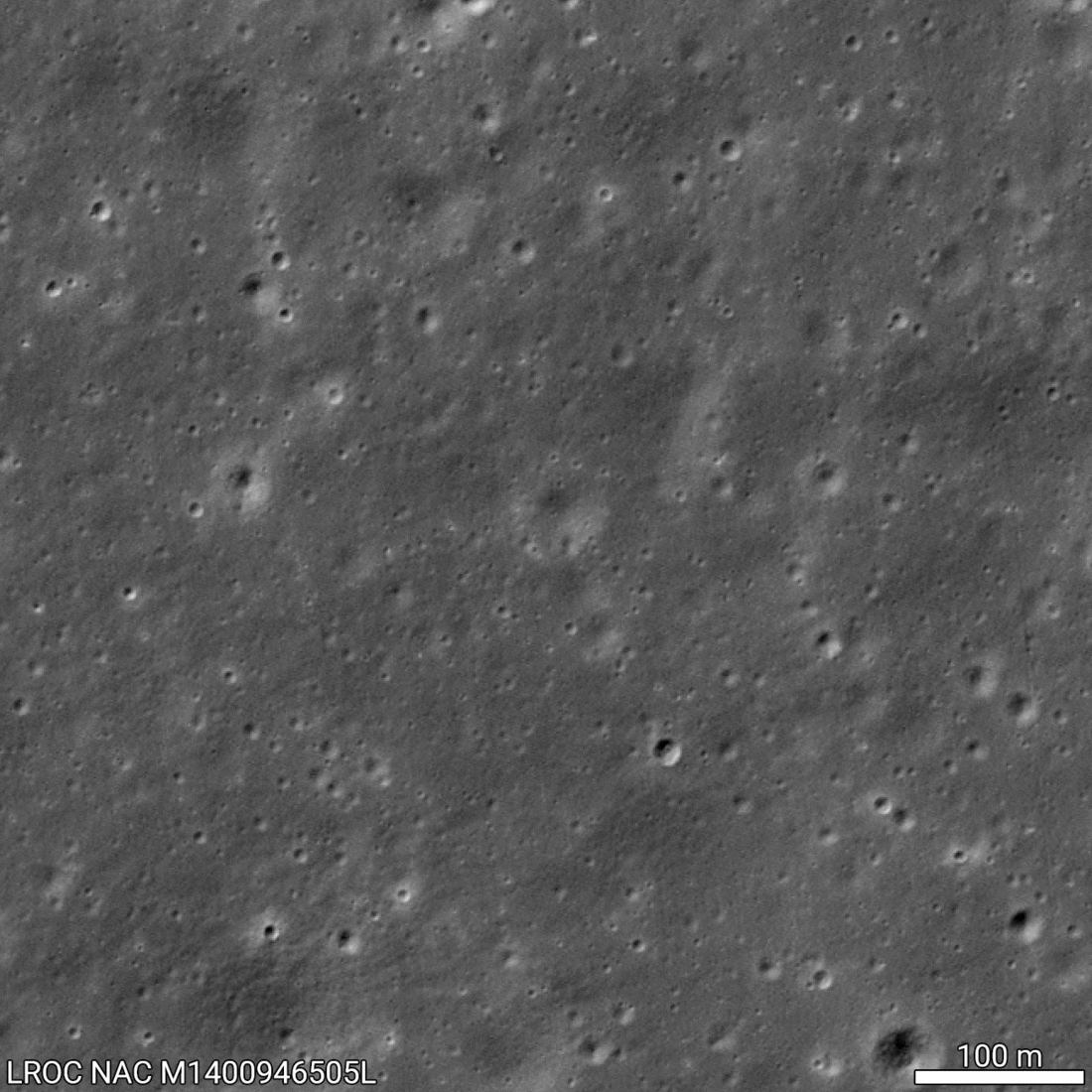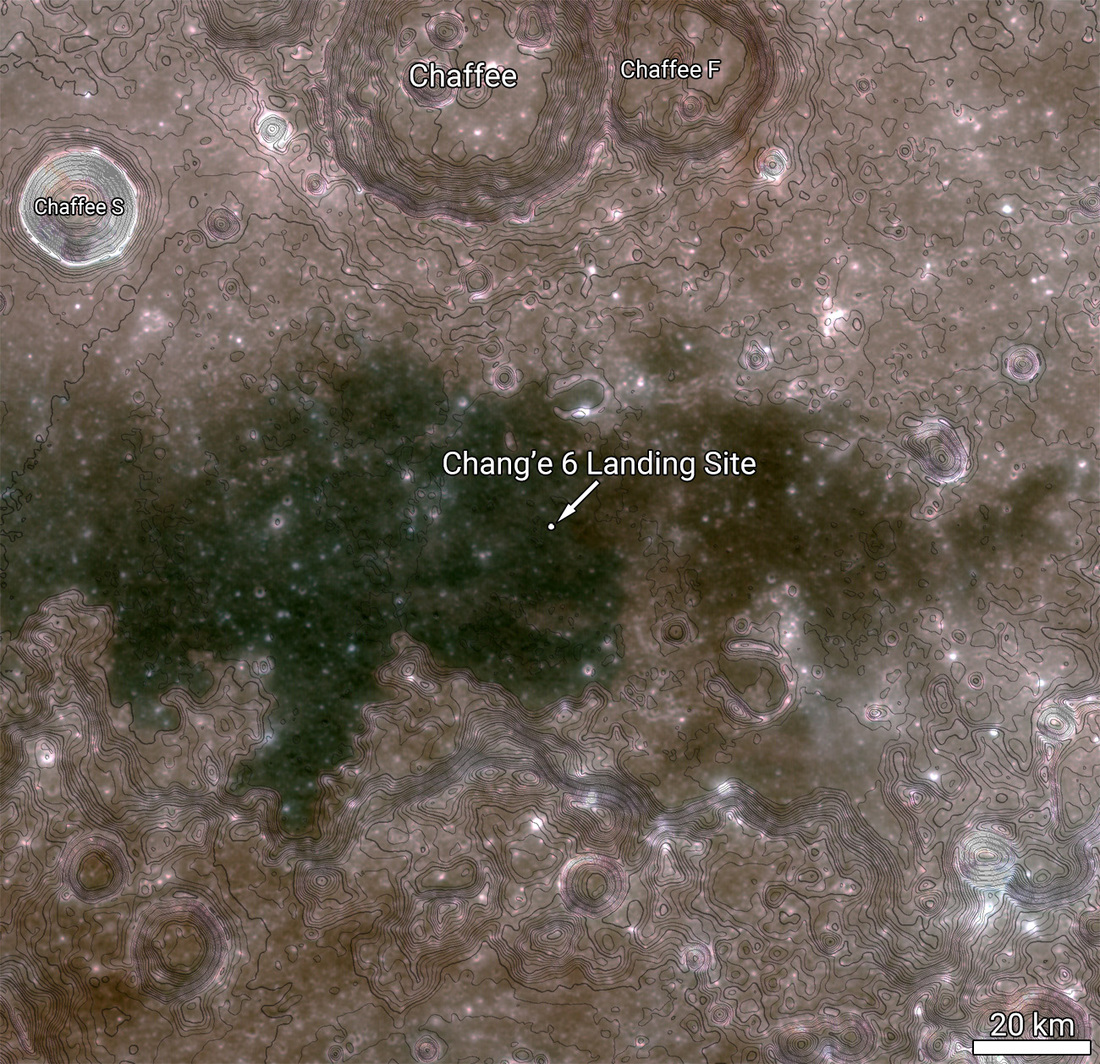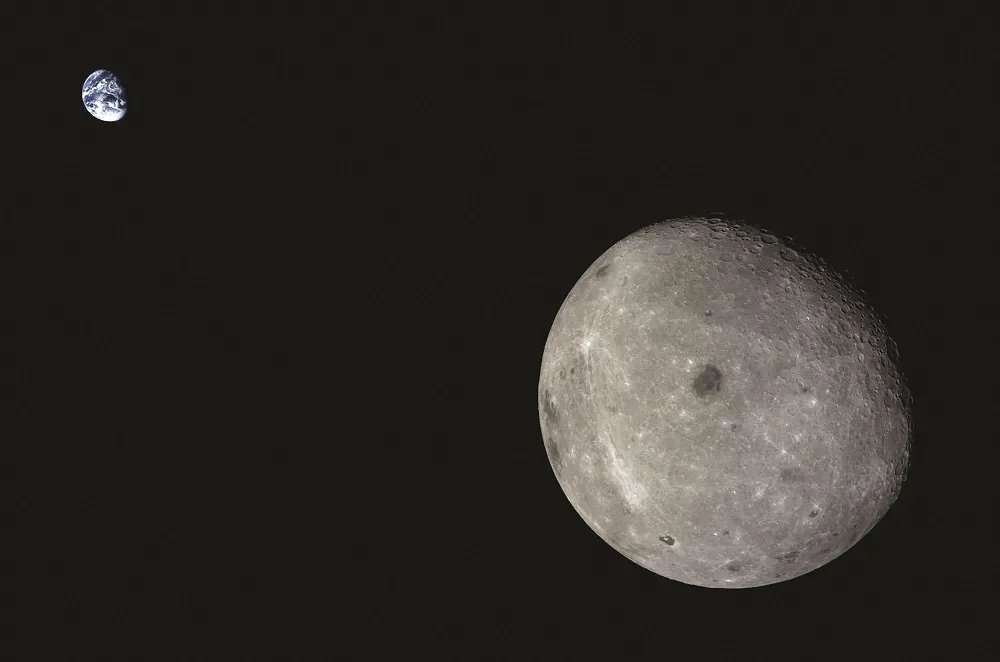NASA has published images taken by the LRO probe in near-lunar orbit. They show the landing site of China’s Chang’e-6 mission on the far side of the Moon.
Chang’e-6 landing site
The photo was taken on June 7. By that time, the Chang’e-6 takeoff module carrying the lunar soil sample had already launched. However, a landing platform remained at the Chinese mission’s landing site, which you can clearly see in the LRO image.

Judging from the image, Chang’e-6 landed on the rim of a highly eroded crater about 50 meters in diameter. The increased brightness of the surrounding area is associated with the operation of the landing engine, which raised dust. This has been observed at the landing sites of other lunar missions. The width of the image is 650 meters.

The Chang’e-6 landing site is located on the southern edge of the 500-kilometer-long Apollo Crater, which in turn is part of the South Pole-Aitken Basin, the largest confirmed impact structure on the Moon. Its dimensions are 2400×2050 km and its depth reaches 8 km. The apparatus landed near the site of a basaltic lava eruption that occurred about 3.1 billion years ago.
Back to Earth
A bundle of the Chang’e-6 takeoff and service module is still in orbit around the Moon. It is expected that they will separate in the coming days. After that, the service module will activate its engines and head toward Earth. On June 25, it will drop a sample capsule that will land in China. As for the takeoff module, it will remain in lunar orbit and eventually fall to the surface.

Scientists hope that the collected samples by Chang’e-6, will shed light on the causes of the so-called asymmetry of the lunar hemispheres. The fact is that the Earth-facing side and the far side of the Moon are very different from each other. While the visible side of the moon is covered with a large number of seas, the far side has almost none, but is much more strongly cratered. In addition, the crust on the far side of the Moon is on average 10 km thicker than on the visible side. Most scientists attribute this asymmetry to volcanic activity. It may have been triggered by the impact that formed the South Pole-Aitken Basin.
In addition, the samples collected by Chang’e-6 may contain fragments of lunar mantle dislodged during the formation of the South Pole-Aitken Basin. Studying them can provide valuable insights about the Moon’s internal structure.
Earlier we told you about the first scientific discovery of Chang’e-6.
According to LROC


